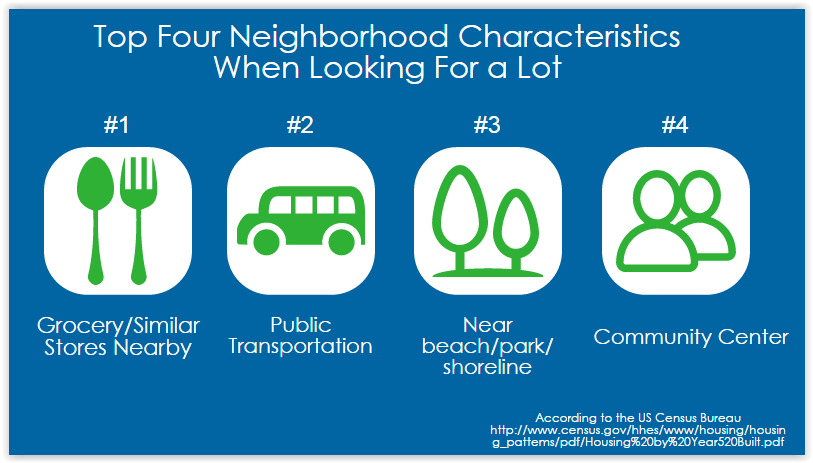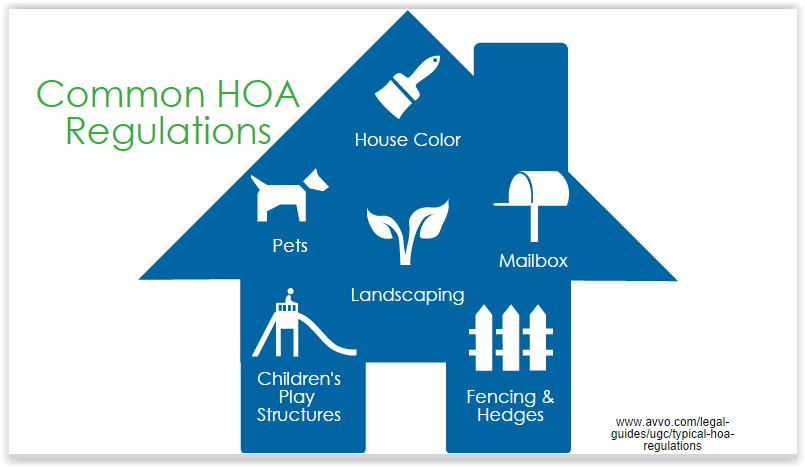The process of building a home and finding the perfect lot can be an exciting but also a tedious project. This is mainly due to the shortage of developed lots and the rising prices of outdated homes. This makes the option of buying a new lot to build on your land much more attractive.
Location
Always keep the value of your home build location in mind. There are a lot of factors that can damage your resale value, your building/living experience on the land, or both. Always be thinking ahead. You’ll want something that can provide the most value for every stage in life. In other words, shop for a community at the same time that you shop for a lot.
For those intending to buy land to hold onto and possibly sell in the future, this applies to you as well! Keep an open mind. You may be happy into your retirement, but proximity to a good school has an impact on resale value. The same goes for the community. Even if you don’t personally reside on your land, you’re not going to be able to charge top dollar if your neighbors are criminals. Just like every other aspect of real estate, location matters!

Potential Costs
In addition to the obvious cost of the land itself, there are the costs of title insurance, surveying, utilities, homeowner association fees, easement fees, excavating, taxes, and more! While some of these are fairly obvious and either avoidable or unavoidable (we’re looking at you, taxes!), others are a bit more vague and complicated.
One area that has the potential to be a BIG expense is utilities. The backwoods charm of that land perfect for a vacation home might rack up a huge utility installation bill, and the farther away you are the more it will cost. Your best case scenario will be finding a piece of land with utilities already installed. It is VERY important that when looking at land you make sure you leave no stone unturned. Ensure that you are prepared to deal with all potential costs before you make any commitments.
Recently Surveyed Land
It’s legally essential to have your land surveyed. An easy way to check if your land was surveyed is to check the corners of your property. Often surveyors will leave evidence on the borders. But, even if a survey has already been done it could be outdated, getting a new one will help you to clearly define your property line. Evidence may be available online or at the city or county center. This will help to give you an idea on how much work needs to be done, whether it’s creating new power or phone hook ups, or clearing trees to make more room.
Government Regulations
Fear not, future land investment expert; these government regulations have a necessary function. After all, do you really want a Piggly Wiggly on one side of your land and a power plant on the other? (Remember, resale value!) Zoning ordinance is public record, which you can find at the local city hall or zoning office. Some so don’t hesitate to check the city’s website. When you’re checking, don’t just make sure that you’re building the proper structure in the proper place, also find out if there are any major changes taking place in your area. You wouldn’t want to settle into your nice new home only to see that a railroad is being built half a block away. Buying a lot is a very important and complex decision. By knowing what to look for when purchasing a lot, building your home from the ground up can be a much more enjoyable experience.
Road Access & Easements
An area that can significantly impact the value of your lot is road access. You may find lots that are landlocked, without legal access to the property. The only way to access it is via a private road owned by your neighbor. These lots will likely be available at a sizable discount, and if you have friendly neighbors, a knack for negotiation, or a good lawyer, you would be able to draw up an easement. An easement is legal permission given to you by a neighbor to use a part of their land for your own needs, such as attaching a driveway to their private road or running power lines over their land. Your neighbors may request a fee for use of their land. Therefore, it is smart to consult a lawyer when negotiating an easement to draw up official documents to protect yourself from any liabilities.
Topography
When selecting a lot, pay close attention to the topography of the land. A house on a hill can provide fabulous views, but with the tricky terrain; roads, utilities, water, sewer, and foundations can add 25-30% to building costs alone. Lots with trees, a view, rectangular in shape, a gentle slope and a good location are often most preferred, and streams can boost values by 100% in some cases. It is also important to know what kind of rock or soil you are building on, such as barren rock which will increase costs and will eliminate the option for a basement.
Tax Obligations
If you plan to hold onto a property for a length of time be aware of the high tax relative to the actual value of the property. Some properties have extremely high tax rates in comparison to the property’s value; therefore a reasonable annual tax bill is usually in the range of 1-4% of the property’s market value. Anything above this and you risk losing out on the land investment long term.
Homeowners Associations & Setbacks
If the land that you are looking to build on is in the heart of an already developed community, chances are it is governed by a homeowner’s association (HOA). Most home owners associations put restrictions in place to maintain an element of formality and predictability in the neighborhood. These homeowner’s associations are necessary, they prevent those annoying neighbors from having a bathtub and a cinder blocked car in their front lawn. Additionally, some similar ordinances may have been put in place by the subdivision or city. Some of these ordinances could include the color of your house, how frequently you cut your grass or where you can park your car. Before you buy your land, review these ordinances and make sure that you are comfortable with them.

One type of ordinance to be extra mindful of is setbacks. A setback is an ordinance that declares how close your house can be to the edge of your property. This is often required in subdivisions or fully developed neighborhoods because space is at a premium. After you take the setbacks into account, ask yourself if it is what you were looking for in a lot?